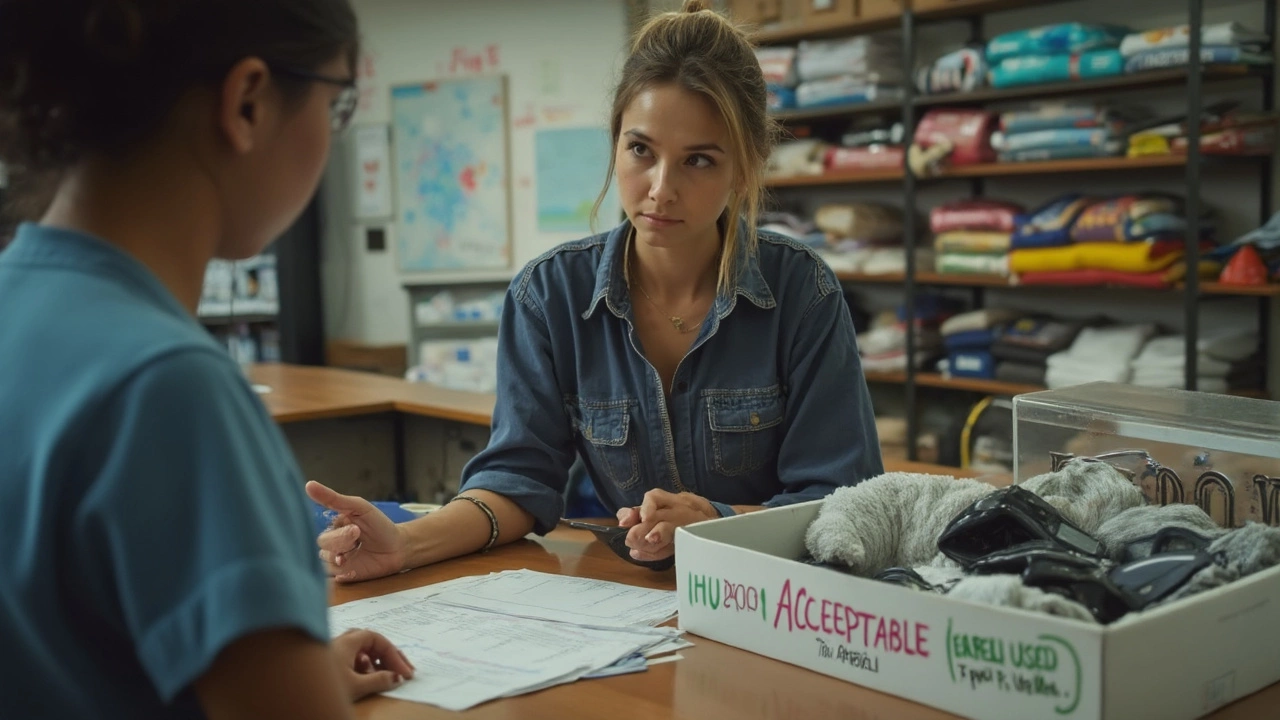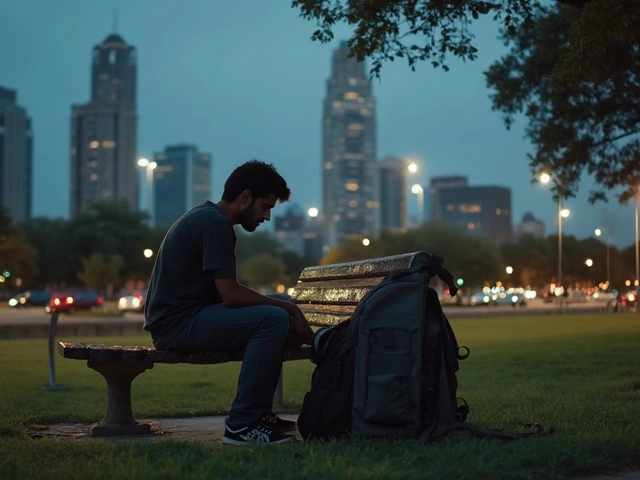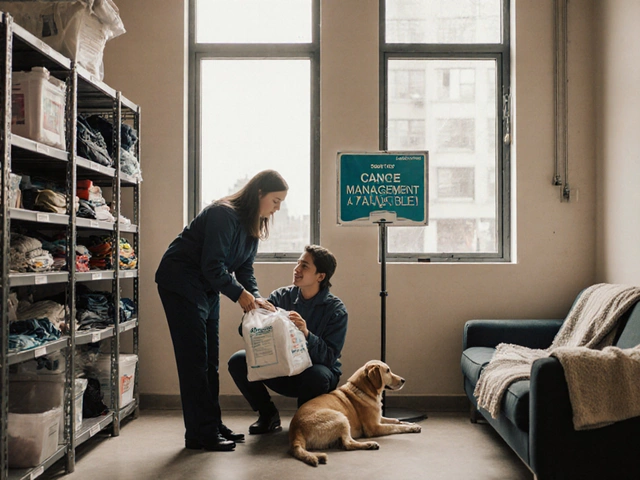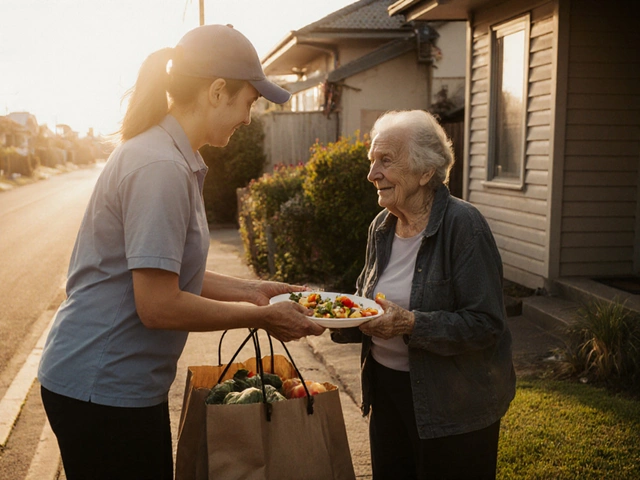Scrolling through your clutter and planning a trip to the charity shop sounds productive, right? But pause before you stuff those bags. Not everything hiding in your closet is a win for donation shelves, and dumping off the wrong stuff just creates extra work for volunteers, wastes resources, and can even cost shops money to dispose of unusable goods.
Ever wondered why there are those polite but firm signs front and center at donation drop-offs? It's because unwanted or unsafe donations actually make things harder for everyone. Some items are banned by law, others by safety rules, and a bunch just can't be resold—think used mattresses, broken gadgets, and anything with missing parts.
If you want your donations to help (not hassle) the cause, you need to know what should stay out of those charity bags. Get ready for tips that come straight from volunteers who deal with mountains of stuff every week—some of it truly surprising!
- Why Some Items Are a No-Go
- The Usual Suspects: What to Skip
- Donations That Cause Trouble
- How to Donate Right
Why Some Items Are a No-Go
Most people think if they're clearing out, anything gently used should be fair game for a charity shop. That’s just not the case. There are solid reasons some items are on the no-thanks list, and none of them are about being picky—they’re about safety, cost, law, and what really helps.
First up, let’s talk regulations. Laws across the UK, US, and other places set out rules on what you can donate. For example, electrical goods must be safety-tested before resale, which costs money and effort most charity shops just don’t have. Same goes for baby gear: car seats, cribs, and strollers need to meet up-to-date safety standards, and old or recalled items risk real harm.
Hygiene also matters. Open cosmetics, half-used toiletries, or anything touching sensitive skin (like underwear, unless unworn and sealed) carry health risks. During the pandemic, these rules only got stricter, and most charities don’t see that changing any time soon.
Then there's the cost problem. When shops get stuff they can’t sell—like broken furniture, used mattresses, or ancient TVs—they have to pay to cart it away. In the UK, it’s estimated that up to 30% of donations have to be thrown away each year, with disposal bills hitting into the millions.
| Item Type | Reason for Refusal |
|---|---|
| Electrical Goods | Require testing – costly and risky |
| Mattresses | Strict hygiene regulations |
| Car Seats | Safety standards change frequently |
| Old TVs | Can't be resold, expensive to dispose |
Even if something seems useful at home, it doesn’t mean it’ll sell at a charity shop. If staff can’t price it easily, or if it’s missing instructions, cords, or parts, it’ll probably get left behind. And that’s not what donating should be about.
The—and here’s the bottom line—donating is great, but only if your stuff doesn’t become someone else’s headache. Knowing why things can't be accepted protects volunteers, shoppers, and, honestly, the whole idea behind donations.
The Usual Suspects: What to Skip
All fired up to support your local charity shop? Before you load up your car, here’s a cheat sheet on what always gets the quick "thanks, but no thanks" from staff. These are the things everyone tries to offload, but shops just can’t accept—no matter how well-meaning your clean-out is.
- Electrical goods — Unless they’re tested and marked as safe, most shops won’t touch plug-in items. Fire risk is a real liability. Some larger charities do PAT-test gear, but better check first. Broken? Straight to recycling.
- Mattresses and soft furnishings — Blankets or pillows that look slept-on or secondhand mattresses will just get binned. There are strict hygiene and safety rules, especially about fire retardant labels. If there’s no legit label, shops can't resell them.
- Car seats, prams, and helmets — Even if they look alright, safety is always a question mark. Shops can’t sell gear that no one can guarantee is damage-free. Risk is too high for both the shop and future users.
- Children’s toys with missing parts — If a puzzle is missing half the pieces, or a toy’s looking rough, don’t donate it. Volunteer teams spend hours sorting and just end up tossing them out.
- Dirty or broken goods — If it’s stained, smelly, cracked, or anything you wouldn’t give to a friend, skip the donations. Cleaning and repair costs eat into charity budgets and eat up volunteer time.
- Kitchenware with cracks or chips — Damaged mugs, plates, or glassware can be dangerous and have zero resale value. These usually get trashed straight away.
Here’s something wild: A 2023 survey of two big UK charities found that about 30% of donations dropped off at shops can't be used. That’s time and money spent sorting and dumping, rather than supporting the real cause.
| Top No-Gos for Charity Shops | |
|---|---|
| Electrical items (untested/broken) | Unsafe or unverified, adds disposal cost |
| Mattresses/Soft furnishings | Hygiene rules, fire safety labels missing |
| Child car seats/Helmets | Lifespan unknown, can’t guarantee safety |
| Dirty/Damaged goods | Not saleable, uses up limited resources |
It all comes down to this: if you wouldn’t buy it, don’t donate it. You’ll save yourself a wasted trip and actually help your local volunteer team focus on the items that make a real difference.

Donations That Cause Trouble
Charity shops love helpful donations, but some items create way more hassle than good. When you toss something into the donation pile that isn’t allowed or useful, it costs the shop time, money, and sometimes even safety standards. Let’s break down the biggest problem-items that volunteers and staff dread the most.
- Electrical goods: Think kettles, radios, toasters, and even old chargers. Many shops can’t legally sell electrical items because they haven’t been safety-tested. Unless your local charity shop states otherwise, skip the electronics.
- Unhygienic goods: Used pillows, mattresses, and duvets make the top of the “no thanks” list. Laws keep second-hand bedding off the shelves because of health reasons, dust mites, and potential bugs.
- Broken, dirty, or incomplete stuff: If it’s cracked, has missing pieces, or hasn’t seen a wash in years, just don’t bring it. Volunteers spend hours sifting through these items, only to bin them later. Remember, if you wouldn’t gift it to a friend, don’t donate it.
- Large furniture: Charity shops often lack the space to store wardrobes, sofas, or big tables. Plus, those heavy items are a pain to move and could even be rejected if they don’t have the right fire safety tags.
- Food and medicines: It happens more often than you’d think—expired canned goods or half-used creams get dropped off. Shops legally can’t resell them, so they’re thrown out straight away.
Check out this quick snapshot of what usually causes trouble:
| Problem Donation | Why It’s an Issue |
|---|---|
| Old TVs/Electronics | Must pass electrical safety tests (which most shops can’t do) |
| Bikes or scooters | Can be dangerous if not checked for faults |
| Car seats/Helmets | Safety can’t be guaranteed once used |
| Sharp knives or blades | Health and safety risks—shops are not allowed to accept them |
Even something like a huge box of National Geographic magazines (people mean well!) can eat up limited storage for months because they rarely sell. Better to call ahead or check the shop’s website if you’re unsure. Being picky with your donations means less waste and more money raised for the cause. That’s a win for everyone—especially the volunteers who already have a lot on their plates.
How to Donate Right
If you want your stuff to make a real difference at a charity shop, there’s a simple rule: Only donate what you’d be happy to buy yourself. But there’s more to it. Here are the steps you should follow to make sure you're helping and not just adding to the pile of unusable goods.
- Check the shop’s list: Nearly every charity shop has a sign or a website page about what they can and can’t accept. Don’t just guess—take two minutes to check. Some shops can’t handle large furniture, electrical items, or specific clothes for safety reasons.
- Clean and sort: Clothes should be freshly washed and folded, not dumped in mystery bags. Toys need all their parts and should have batteries removed. If you wouldn’t hand it to a friend, don’t hand it to a volunteer.
- Bag and box things properly: Use reusable bags or sturdy boxes. Overstuffed garbage bags rip and spill. Bonus tip: Label the boxes or bags to help sorters.
- Season and style matter: Shops can’t always store out-of-season clothes for months. Donate winter coats in autumn and summer things in spring, so they reach shoppers when demand is high.
Here’s a quick look at what actually happens when you donate right versus wrong:
| Donation Type | Time Spent Processing | Can Be Sold? |
|---|---|---|
| Clean, sorted clothes | 3-5 minutes | Yes |
| Dirty or damaged clothes | 10+ minutes (or thrown away) | No |
| Boxed, complete toys | 2-4 minutes | Yes |
| Incomplete, tangled toys | 8+ minutes | No |
If you’re still not sure about something, call the shop first or look up their current guidelines. Even a quick message on social media gets you the answer. And remember, donating the right way saves charity shops thousands in disposal costs every year—money that can go to the causes you care about instead of landfill fees.





